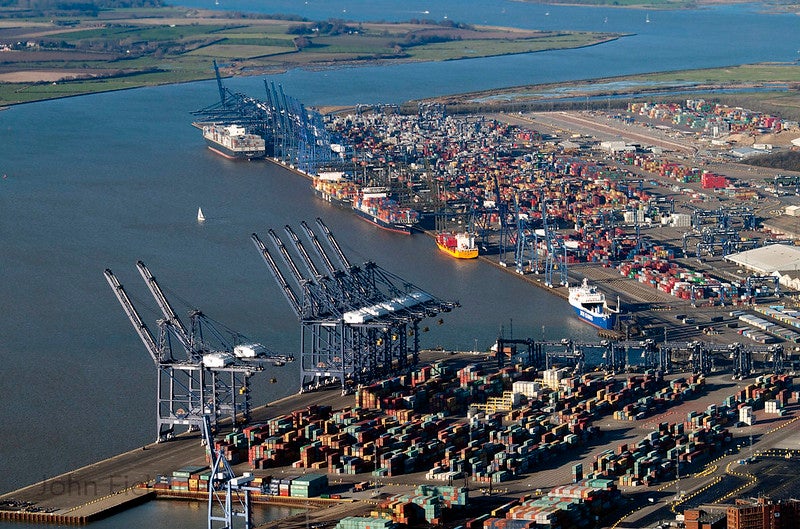
Secretary of State for Transport Chris Grayling namechecked 19th century engineering giant Isambard Kingdom Brunel during the late-January launch of the UK’s Maritime 2050, a strategy document laying out the country’s vision for the shipping industry over the next three decades.
Grayling cited Brunel’s work on the SS Great Western’s first transatlantic voyage as an emblem of the “spirit of endeavour, imagination and fearlessness” that are needed to propel Britain’s maritime industry today.
21st century shipping challenges and opportunities are far removed from their 19th century counterparts; Brexit, skills shortages and a deepening environmental crisis are very modern concerns, as is the need to capture the benefits of potentially revolutionary advances in automation and digital connectivity.
Maritime 2050 aims to create a stable and coherent framework for the long-term development of the British shipping industry. Below are five key takeaways from the strategy, from autonomous ships and smart ports, to strengthening and diversifying the industry’s workforce.
A maritime innovation hub by 2030
One of Maritime 2050’s standout short-term goals is the establishment of a ‘maritime innovation hub’ at a UK port by 2030 in a bid to accelerate the pace of innovation in Britain’s maritime sector. The hub, which is intended to be awarded to a port based on an open competitive bidding process, will “bring together expertise, support technology development and boost regional productivity”, according to the government.
Looking further ahead, the hub will provide the basis for a broader network of regional research and development clusters across the UK, a process that the Department for Transport (DfT) expects will help attract broader technical talent into the maritime sector.
More broadly, the strategy envisions the wider upgrade of the UK’s port infrastructure into ‘smart ports’ as part of an advanced and integrated supply chain by 2050. The development is to be led by industry with government support, including joint competitions to develop technologies and trial new ideas.
“By pioneering new business models and realising the benefits of new digital and automated processes, [smart ports] will maximise throughput of goods with seamless onward connections,” the DfT noted in the report.
Diversifying the maritime workforce
Maritime 2050’s approach to maritime labour is motivated by factors including the variety of skills expected of workers in an increasingly IT-driven industry, issues with awareness of the industry among young people and modern-day welfare issues for seafarers.
Diversifying the marine workforce is a key priority. With women making up just 4% of the UK maritime sector’s more than 10,000 active certified officers, the DfT has committed to building on its work with the public-private Women in Maritime Task Force to help address the imbalance.
“This is not a tick box exercise, or an attempt at virtue signalling,” Parliamentary Under Secretary of State at DfT Nusrat Ghani said in January. “No industry will reach its full potential if it only takes advantage of a tiny proportion of the talent pool. There are so many gifted people out there.”
As well as raising awareness of the industry’s opportunities in general, the department’s plan to fund a publicity drive under the banner ‘People Like Me’ is also expected to help address mischaracterisations of the sector and make it more inclusive to a wider range of talent.
A new generation of digital navigation and comms tech
The strategy heavily emphasises the importance of the ongoing digitisation of the maritime sector, from blockchain-based distributed ledgers to digital documentation for seafarers. This carries over into navigation and communications tech, with the government expressing the need for improvement in areas such as Arctic navigation to take advantage of emerging shipping routes. The government will commission a study investigating the future of navigation, which will aim to set out the industry’s needs and the UK’s capability to meet them.
Maritime 2050 also sets out the government’s commitment to mapping the UK’s seabed and that of its Exclusive Economic Zone, the fifth-largest in the world, which will help with the sustainable management and economic benefits of the ocean environment. It will also push to take the lead on international seabed mapping efforts.
“By linking existing UK space manufacturing and R&D capabilities to the maritime sector, cross-sector potential will be unlocked,” the document notes. This is an approach that has already been explored elsewhere in the industry, as seen recently with the SpaceTech4Sea project.
Climate change and pollution mitigation
As a source of 2.2% of global greenhouse gas emissions – equivalent to a country the size of Germany, Grayling pointed out – the International Maritime Organization is implementing international standards on emissions of CO2, nitrogen oxides, sulphur dioxide and particulate matter.
Although firm commitments are lacking, Maritime 2050 reflects the government’s stated intention to outpace other countries and international standards in its drive towards zero-emission shipping by 2050.
The DfT is planning to assess how economic support measures could help accelerate the transition, as well as considering the possibility of introducing a national target on greenhouse gases and air quality pollutants from UK shipping. More details on these ambitions are expected to be revealed in the government’s upcoming Clean Maritime Plan.
A framework for autonomous vessels
The government’s plan to comprehensively map the UK seabed calls for the use of autonomous vessels to carry out the work, and Maritime 2050 sets out further commitments to the development of ship automation and remote operation. Grayling has praised UK companies taking on the autonomous shipping challenge, including Hush Craft and L3 ASV.
To support these efforts, the government intends to develop a UK legislative framework for the testing and deployment of autonomous vessels, as well as leading work towards an international regulatory framework. Maritime UK notes that the shipping sector could take inspiration from the automotive industry, and that the government will help fund flagship projects to help chart a technological course for a technology that could come to define 21st century shipping.



